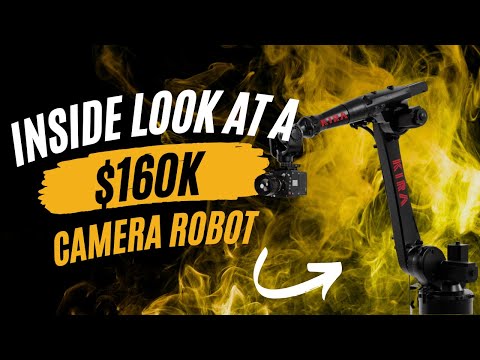
If there’s one thing I enjoy watching, it’s people jumping in at the deep end. People who have no training or experience, and no business buying a $160,000 machine. People who take the gamble and go ahead and do it anyway.
That’s essentially what happened with the folks at Muse Storytelling. Camera robots are not cheap, even to rent. So, they decided to commit fully and buy one. In this video, they talk about what it’s like to learn a system like this and some of their favourite movies.
Motion Control Robot Arms – Not beginner-friendly
Motion control robot arms are both expensive and complex. In fact, even the inexpensive robot arms on the market are quite complex. As you can imagine, the learning curve for one of these things is quite steep.
The team bought the robot arm to use on a film. But there was only a month between receiving the unit and the film going into production. That’s how long they had to learn how to use it. At least, well enough to pull off the shots they need for the film. And they had only one 8-hour official training session to start them off.
We see videos shot on robot arms quite regularly from the likes of Steve Giralt and the Slow Mo Guys. And sometimes the two of them together. But those guys really know their stuff. They just show you the arm doing the thing in the software and then the arm doing the thing for real. It just works.
It’s interesting to hear about some of the challenges of learning the system in the video and how things started to click into place.
A wide range of camera move options
The point of robot arms is to be able to offer precise, repeatable camera moves, often at some speed. The team talk us through some of their favourite robot arm camera moves in the video. A lot of the moves are quite standard, like barrel rolls, but others are more tailored to specific shots.
It’s interesting to hear the comparisons between moving a camera on a robot arm vs trying to do it manually with something like a gimbal. Even if the repeatability isn’t important, the robot arm is often more reliable.
Sure, there’s more setup work involved. But once you hit that button to go, you know you’re going to get the shot you want. It’s interesting to see their favourite moves and some of the behind-the-scenes action that went into creating them.
Some interesting insights
One thing I hadn’t really considered – living in a country where 240v AC is quite normal – is that the power requirements for this are quite high. In the video, they mention they had to “get special power installed”. Whether that means 240v or something higher, I’m not sure.
But it’s things like this that we don’t think of when we’re not really in the market for one. We look at the price tag of the arm itself and just think “Nope!” without even looking into the associated costs. Extra things you’ll need to do to either prepare for its use or to actually use it.
Overall, it’s an interesting look at the journey of a company getting well out of their comfort zone with some new hardware. I look forward to seeing future content they make with it!







